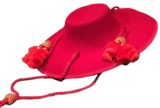02-19-2025, 12:01 PM
Attachment in 1st worked well enough.
On possible technique is to paint the text over with a fade gradient.
When you stroke the path, each calligraphic stroke is actually stroked twice, once along each border because the path follows the outline of the stroke. This is why the soft brush is useful because it makes a nice transition between the two actual strokes.
There is also a third way(*) where you create a middle-line path and stroke it (so each calligraphic stroke is only stroked once)
(*)

On possible technique is to paint the text over with a fade gradient.
- Define a gradient with a light and a dark color* Set the brush dynamics to Color from gradient
- Set the fade length on the brush to the average length of a stroke
- Set repeat to None or Triangular wave
- Alpha lock the text layer
- Manual:
- Take a "hard" brush wide enough to cover the stroke width
- Paint by hand, following the strokes with the mouse
- Take a "hard" brush wide enough to cover the stroke width
- Automatic:
- Get a path from the text layer (Layer > Text to path)
- Set the brush to some soft brush (about as wide as the strokes)
- Edit > Stroke path using the brush, with Emulate brush dynamics
- Get a path from the text layer (Layer > Text to path)
When you stroke the path, each calligraphic stroke is actually stroked twice, once along each border because the path follows the outline of the stroke. This is why the soft brush is useful because it makes a nice transition between the two actual strokes.
There is also a third way(*) where you create a middle-line path and stroke it (so each calligraphic stroke is only stroked once)
(*)



